Tundra: Virtual Bookshelf
The Virtual Bookshelf provides a list of recommended children’s books that reflect the theme of the issue and offers ideas on how to integrate them across the curriculum.
In elementary school classrooms, youngsters learn about human communities. How firefighters, police, teachers, business owners, librarians, doctors, and other workers keep a community running – each person having a special role. Nature has its communities, too. And, in the way New York City differs from Findlay, Ohio, and Rapid City, South Dakota, plant and animal communities vary under different environmental conditions. Can you imagine an elephant living in Alaska? Its giant ears are great for cooling its body in the hot savannas of Africa, but they would freeze in the tundra. What about a polar bear living in Florida? The situation might make a great movie, but polar bears need ice to hunt seals and often go hungry during the summer when the ice melts.
This month’s bookshelf includes books that will help students understand ecological communities, or biomes, and the unique species that reside in the tundra and taiga. Food chains and webs are an easy way to illustrate the interdependence of each organism in these communities. Of course, we’ve also included favorite penguin and polar bear books as well!
FOOD CHAINS AND FOOD WEBS
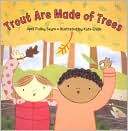 |
Trout are Made of Trees. April Pulley Sayre. 2008. Nonfiction picture book. Recommended ages: Grades K-1.Collage and mixed-media illustrations make this easy book about food chains and natural recycling perfect for sharing. As falling leaves land in the river and sink, bottom-feeders make a meal of them and are in turn consumed by larger animals until they are eaten by the trout. And who’s at the top of the food chain? We are! I guess we’re made of trees, too. |
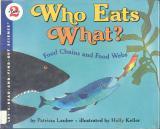 |
Who Eats What? Food Chains and Food Webs. Patricia Lauber. 1995. Nonfiction book. Recommended Ages: Grades 2-4.Part of the Let’s-Read-and-Find-Out Science series, this book introduces students to terrestrial and marine food chains in a variety of ecosystems – including the Southern Ocean surrounding Antarctica. |
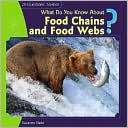 |
What Do You Know About Food Chains and Food Webs? Suzanne Slade. 2008. Nonfiction book. Recommended ages: Grades 3-5.An overview of food chains and webs, with marine and terrestrial examples, and how humans are part of and impact them. The question-and-answer format of this book makes it perfect for focused reading or a reading method such as SQ3R. |
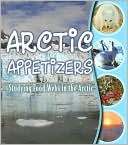 |
Arctic Appetizers: Studying Food Webs in the Arctic. Gwendolyn Hooks. 2009. Nonfiction book. Recommended ages: Grades 4-5.Did you know there are more than 200 species of algae that thrive on ice? These algae are the basis of the food chain for all of the animals that survive in the Arctic. The zooplankton eat the algae, fish and other animals eat the zooplankton, and predators eat fish and other predators. Life on the tundra is also described–from producers (plants) to consumers (herbivores, omnivores and carnivores) to decomposers (molds and bacteria). Because this book introduces a lot of vocabulary, teachers may want to consider using it as a read-aloud or in the context of a vocabulary activity. |
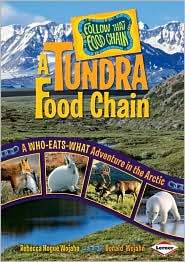 |
A Tundra Food Chain. Rebecca Hogue Wojahn and Donald Wojahn. 2009. Nonfiction book. Recommended Ages: Grades 4-5.Billed as a “follow-that-food-chain adventure,” this book gives Arctic tundra animals a code to identify producers, primary consumers, secondary consumers, tertiary consumers and decomposers. Two-page spreads have photos and facts about each organism and its adaptations to the tundra. Readers choose what the animal “dined on” and are directed to that organism’s page. The back-and-forth reading of this book helps to demonstrate the complexity of food webs. |
TUNDRA AND TAIGA
Some books incorrectly identify the many species of lichens found on the tundra as plants. Lichens are not plants; rather they are a fungus and an alga living together. For more information about plants and lichens, please refer to our March 2009 issue: Polar Plants.
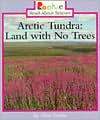 |
Arctic Tundra: Land with No Trees. Allan Fowler. 1996. Nonfiction easy reader. Recommended ages: Grades K-2.Part of the Rookie Read-About Science collection, this simply written book introduces the characteristics of a tundra – the landscape, the climate, the location, the plants and animals, and the native people. |
 |
Living in the Tundra. Donna Loughran. 2003. Nonfiction easy reader. Recommended Ages: Grades K-2.This easy reader from the Rookie Read-About Geography series introduces the animals and people that live on the tundra. |
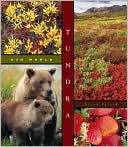 |
Tundra. Aaron Frisch. 2008. Nonfiction book. Recommended ages: Grades K-2.Large type and many photos engage students as they learn about the seasons and life on the tundra. |
 |
Living in the Tundra. Carol Baldwin. 2004. Nonfiction book. Recommended ages: Grades 3-5.An overview of the tundra, its plant and animal species, food chains and webs, and importance for humans. |
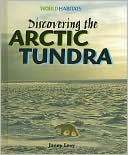 |
Discovering the Arctic Tundra. Janey Levy. 2008. Nonfiction book. Recommended ages: Grades 3-5.Students will learn the location and characteristics of the tundra biome. They will discover where tundras are located, and how the average temperatures and precipitation make this biome different from hot deserts, temperate forests, and polar ice caps. Plant and animal adaptations to the environment, such as plants with hairy leaves and animals that change color with the seasons, are discussed. The impact of global warming and the importance of conserving this biome are covered. |
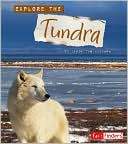 |
Explore the Tundra. Linda Tagliaferro. 2007. Nonfiction book. Recommended ages: Grades 3-5.This book introduces the concept of biomes and shares the climate and organisms unique to the tundra. A map of the world shows where tundra biomes are located. Food chains vary greatly from season to season in the tundra. Summers bring diversity in both plants and animals, creating more complex food webs. The last third of the book discusses the human impact on tundra biomes and conservation. |
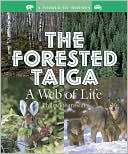 |
The Forested Taiga: A Web of Life and The Frozen Tundra: A Web of Life. Philip Johansson. 1999, 2004. Nonfiction books. Recommended ages: Grades 4-5.Both titles are part of Enslow Publishers’ World of Biomes series. These books begin by locating and describing each biome: what the weather and climate are like, what the soil is like, and what plants and animals are typically found. A deeper look is taken at the community of life in each biome, and how each plant and animal contributes to the energy cycle that makes life possible. Both books have an attractive layout with many photographs and diagrams. |
PENGUINS AND POLAR BEARS
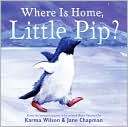 |
Where Is Home, Little Pip? Karma Wilson. 2008. Picture book. Recommended ages: Grades K-1.Pip the penguin, who lives “where the land is free from hill or mountain, twig or tree, in a pebbly nest by the stormy sea,” gets lost when she wanders off after a stray feather. Along the way she meets a whale, an albatross and some sled dogs. They describe their homes, but the homes aren’t like Pip’s. Finally, she remembers the words to a song her parents sing to her and finds her way back to the pebbly nest by the stormy sea. |
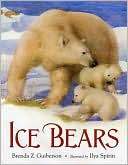 |
Ice Bears. Brenda Z. Guiberson. 2008. Nonfiction picture book. Recommended ages: Grades K-3.A mother polar bear digs out a den in the middle of winter and gives birth to two cubs. As spring approaches, the mother’s fat reserves are depleted, and she is forced to venture into the open to search for food to keep herself and her cubs alive. The cubs must learn how to walk in the snow, smell the air for predators, dig with their sharp claws, and swim. Summer is a time of hunger; there is no ice cover from which to hunt seals. The cubs are always at their mother’s side and eventually follow her lead to help hunt when autumn’s ice returns. Watercolor illustrations show the bears’ journey. |
This article was written by by Kate Hastings. For more information, see the Contributors page. Email Kimberly Lightle, Principal Investigator, with any questions about the content of this site.
Copyright April 2009 – The Ohio State University. This material is based upon work supported by the National Science Foundation under Grant No. 0733024. Any opinions, findings, and conclusions or recommendations expressed in this material are those of the author(s) and do not necessarily reflect the views of the National Science Foundation. This work is licensed under an Attribution-ShareAlike 3.0 Unported Creative Commons license.















